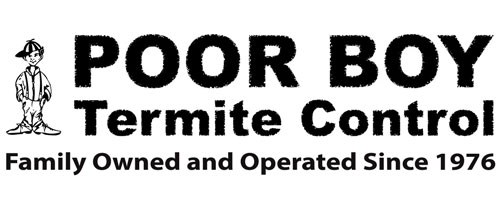To eradicate different types of termites, including Formosan, Drywood, and Dampwood termites, it can take between just a few days to 90 days after treatment. It takes much longer to get rid of Subterranean termites, though, as 2-4 years may pass before the colony is completely wiped out. Once applied, most termite treatments can last for at least 5 years, with other stronger methods keeping your home pest-free for 8 to 10 years. Let’s take a look at the different types of termite treatments, and which is best for your home!
How Long Does It Take To Get Rid Of Termites In Your House?
The amount of time it takes to get rid of termites ultimately depends on the type of treatment, species, and infestation level. The first step toward getting rid of any unwanted pests in your home is identifying the issue and calling for professional services.
The main types of termites are as follows:
- Formosan Termites.
- Drywood Temites.
- Subterranean Termites.
- Dampwood Termites.
Subterranean termites are undoubtedly the toughest species to get rid of, taking several years’ time. On average, though, most other types will be eliminated within 90 days.
How Long Does A Termite Treatment Last?
How long a termite treatment lasts will depend on a few factors, including which type of treatment has been used. These are three most common treatment types: soil, bait systems, and wood treatment.
Soil treatments are often referred to as soil-applied barrier treatments, which involves the use of liquid termiticides meant to last at least 5 years. Some can even last longer – usually between 8 to 10 years. How long it lasts depends on the exact termiticide applied, local environmental conditions, and the amount/density of termites in the area.
Wood treatments tend to last a longer amount of time, potentially for as long as a decade-plus. Although this type of termite control is more preventative in nature, exposed wood can be treated to combat a current infestation as a supplement to soil treatment.
The final common type, bait systems, are a termite treatment easiest to install and the least intrusive. However, individual bait stations only last up to a year, with annual maintenance needed. The goal of baiting is to simply reduce or eliminate termite population as time goes on. Baiting is typically considered the best long-term approach to termite control.
Wood Treatment
Wood treatment includes applying borate-based products to the infested wood, which makes it toxic or repellent to termites, overall. Wood structures, such as fences, posts, decks, and landscape timbers, can be treated to protect against termites. This treatment also helps fight against rot, mold, and other wood-boring insects.
Soil / Barrier Treatment
These treatments are commonly used to treat subterranean termite infestations in the home or commercial building. This method will establish a barrier of soil to be treated with liquid termiticides between the structure and termite colony found in the soil.
The process of a soil treatment will involve digging a trench around the exterior of the building, then pouring or injecting the liquid termiticide into the soil. The treated soil either kills or repels the termites if they attempt to pass through it.
Baiting
Termite baiting systems will utilize a small amount of bait in order to attract foraging termites. Some of these systems are installed below the surface of the ground while others can be inserted either above ground or inside of a structure.
When termites consume the bait, the slow-release toxins or insect growth regulators will either kill them or hinder their growth/reproduction. Foraging termites will bring the bait back to the colony, ultimately sparking a quick decline to the population.
Termite Treatment Factors
Here are a few factors that could impact how long termite treatment lasts:
- Degree of infestation.
- Termite species.
- Type of termiticide applied.
- Local environmental conditions.
- Type of building structure.
Can Termites Return After Treatment?
Termites can ultimately return if proper monitoring and/or maintenance is not performed. Activities, such as planting or digging, have been known to disturb the barrier where the treatment is. This can allow termites to re-enter any gaps and infest your home once again. Contact the team at Poor Boy Termite for more information today!
Termite Control Phoenix Metro Area
Poor Boy Termite Control can solve all of you termite issues. We only deal with termites as the name implies. We use thermal imaging, with no drilling or guessing. At Poor Boy Termite Control we detect termites and treat them. If you have a termite infestation, Call Poor Boy Termite Control at (480) 994-4240 and schedule an appointment before the problem gets worse!








